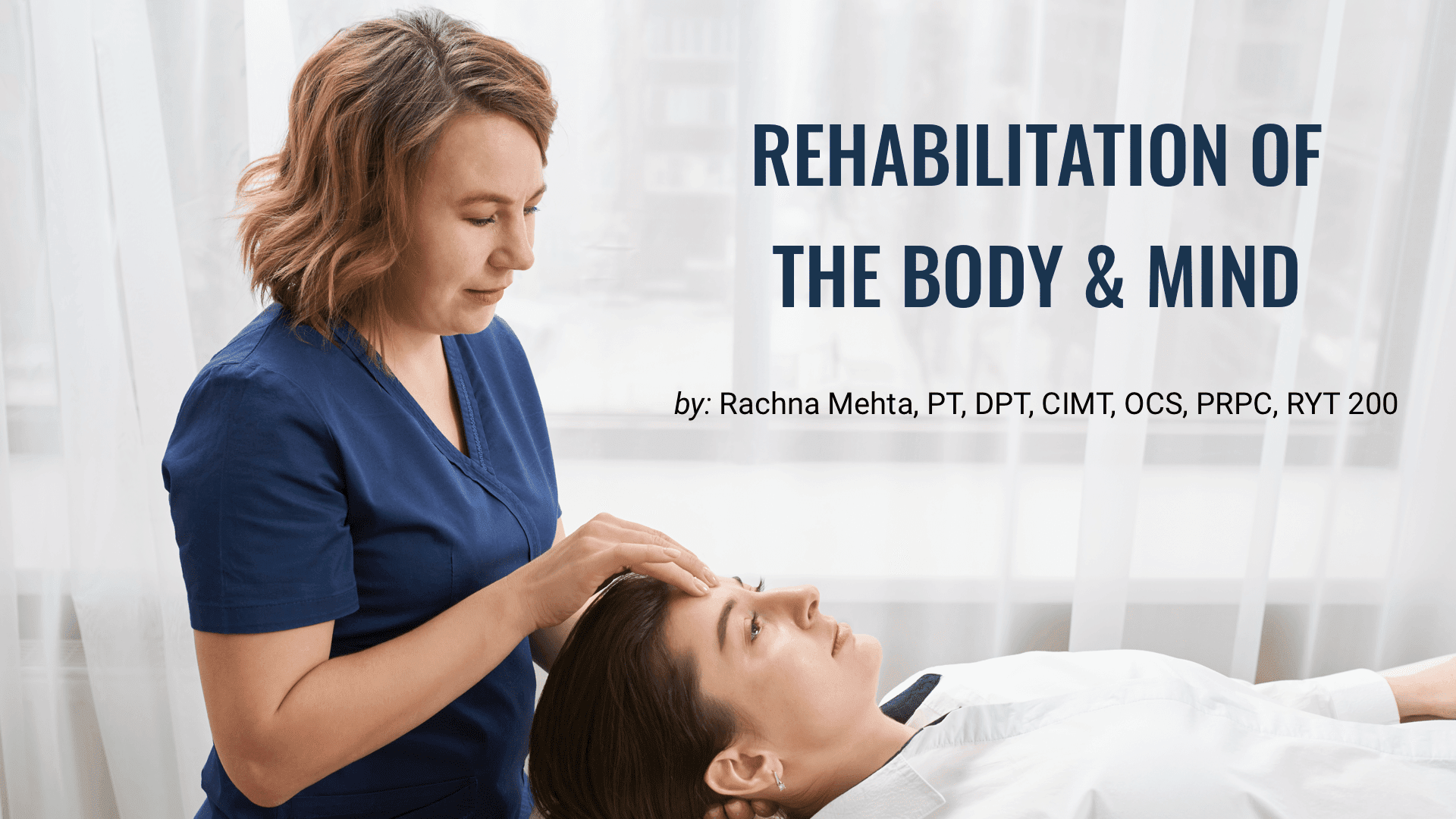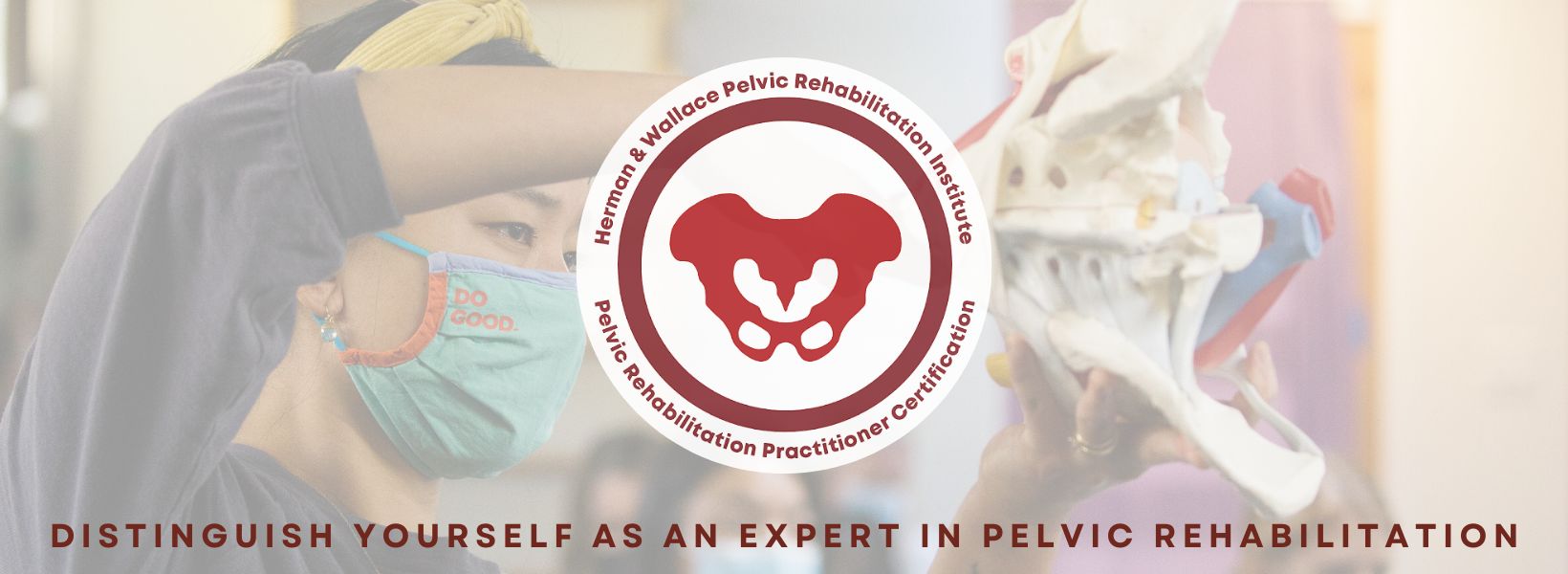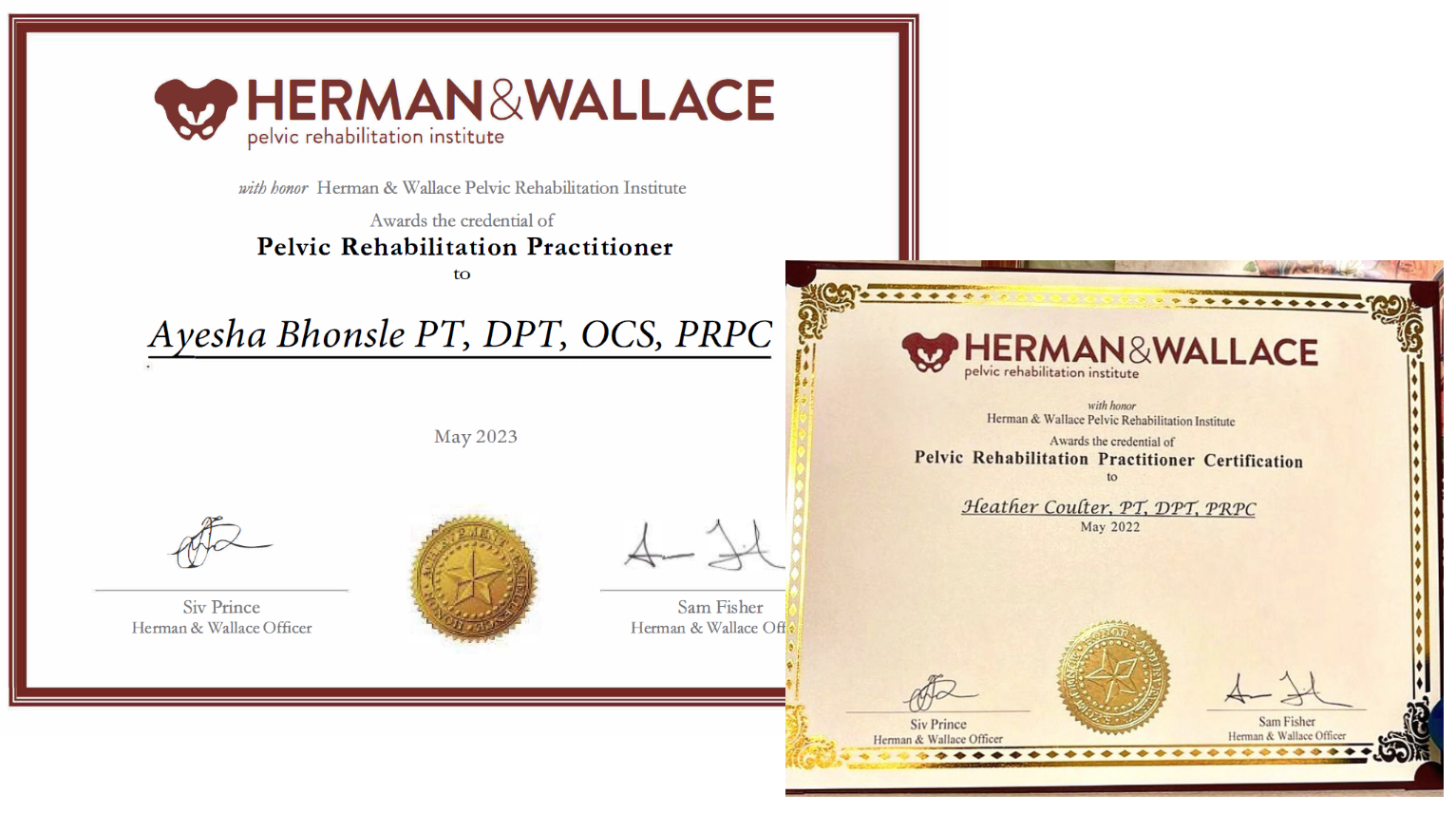
Tina Allen, PT, PRPC has been a physical therapist since 1993 and has specialized exclusively in pelvic health in all genders and throughout the patient's life span for the past 28 years. She works at the University of Washington Medical Center in a multidisciplinary Pelvic Health Clinic where she collaborates with physicians to optimize patient recovery. Join Tina in her upcoming course Manual Therapy of the Abdominal Wall scheduled for November 18, 2023.
One option in our written documentation is to include information on pain, pigmentation, pliability, surface area, height, and patient-reported functional limits due to the scar. This can be time consuming and is difficult to replicate between sessions. As practitioners, we need to be able to show specific gains for insurance and to assist patients (and ourselves) in recognizing gains.
Did you know you can also utilize grading scales that originally were developed for usage with Burn survivors?
We could simply utilize a visual analog scale, but by using a scar assessment tool we can use one simple scale to quantify multiple factors affecting function for the patient. One such scar assessment tool is the Patient and Observer Scar Assessment Scale (POSAS version 2.0). The POSAS is free to access for clinical use and includes both a patient reporting form and a clinician reporting form.
Your patient can utilize the POSAS to report on their current experience of scar symptoms including location, pain presence, scar sensation and restrictions in movement/activity. While as the Clinician questionnaire includes rating from 1-10 regarding vascularity, pigmentation, thickness, relief, pliability, and surface area.
In the clinical environment, we often must justify our interventions with outcome measures, and to be able to add to the research supporting our interventions. In the case of scar management utilizing tools such as the POSAS goes a long way for us as rehab professionals.
Other scales include Manchester Scar Scale, The Stony Brook Scar Evaluation Scale and the Vancouver Scale.
Data from 2015 shows that 28% of pregnancies in developed countries end in C-section, and in April 2022 the American College of Surgeons reported that four-million abdominal surgeries are performed per year in the US. It is unclear why some patients develop painful scars or functional limitations from their scars, but those that do can benefit from Rehab Therapy interventions. Our rehabilitation skills in evaluation, movement education, and manual therapy can facilitate patients in their return to function.
By utilizing the above scales practitioners can assist with quantification of limitations while showing gains achieved from interventions.
Manual Therapy is a way for the clinician to manage tissue tension, holding patterns, and movement restrictions that have developed. Techniques learned in the foundational course, Manual Therapy for the Abdominal Wall, can be applied to the rest of the body and used as a building block for more specialized manual interventions. In the course we address observation and evaluation skills of the myofascial system including scar that assist the clinician in rating forms such as the POSOS scale. Participants in this course will learn to utilize the abdominal wall as a way to build and refine foundational skills of touch, loading, unloading and to address myofascial and functional restrictions.
References:
- https://www.posas.nl/.
- Deflorin, C., Hohenauer, E., Stoop, R., Van Daele, U., Clijsen, R., & Taeymans, J. (2020). Physical management of scar tissue: a systematic review and meta-analysis. The Journal of Alternative and Complementary Medicine, 26(10), 854-865.
- Olszewska, K., Ptak, A., Rusak, A., Dębiec-Bąk, A., & Stefańska, M. Changes in the scar tissue structure after cesarean section as a result of manual therapy. Advances in clinical and experimental medicine: official organ Wroclaw Medical University.
- https://www.facs.org/for-medical-professionals/news-publications/news-and-articles/press-releases/2022/machine-learning-and-patient-outcomes/.
Manual Therapy Allows a Patient to Move Better - An Interview with Tina Allen
Manual Therapy for the Abdominal WallManual Therapy for the Abdominal Wall
Price: $225.00 Experience Level: Beginner Contact Hours: 7 hours
Course Date: November 18, 2023
Description: This remote course is designed to provide an introduction to the basics of myofascial techniques and applying them to the abdominal wall. This course is intended for the pelvic rehab therapist who may be new to palpation and manual therapy techniques, or who wants to refine their skills of discriminate touch. These myofascial techniques can be utilized to assist with treatment of abdominal scars, endometriosis, IC/PBS and abdominal wall restrictions that impact pelvic girdle dysfunction.
Breast Cancer Awareness Month

Allison Ariail, PT, DPT, CLT-LAANA, BCB-PMD is one of the creators of the Herman & Wallace Oncology of the Pelvic Floor Course Series. Allison Ariail is a physical therapist who started working in oncology in 2007 when she became certified as a lymphatic therapist. She worked with breast cancer, lymphedema patients, head and neck cancer patients, and the overall oncology team to work with the whole patient to help them get better. When writing these courses, Allison was part of a knowledgeable team that included Amy Sides and Nicole Dugan among others.
October is breast cancer awareness month.
This is a great time to acknowledge all of the many individuals who have fought against this disease with such bravery and determination! If you have the opportunity to work with these patients, you know what an inspiration they are.
There are many factors that influence the development of breast cancer. From genetics, to environmental exposures, to hormonal influences, there is an abundance of information available to us. So much so that it can be overwhelming to sift through all of it, but it is not only the development of breast cancer that we have information on it is also how breast cancer influences the development of other cancers.
According to Cancer Research UK, having breast cancer in the past increases the risk for the development of gynecological cancers. The risk is higher in those individuals who were diagnosed at a younger age, and with estrogen negative breast cancer.1 In an article in Oncology NEWS International, some statistics were shared. The overall risk for development of ovarian cancer in breast cancer survivors is 1.30. This risk is higher if a patient was diagnosed prior to age 50, with the highest risk in patients that were diagnosed with breast cancer between the ages of 15 and 39.2 Not only is there an increased risk for ovarian cancer, but also for uterine and endometrial cancers.3,4 Especially if a patient was prescribed Tamoxifen in order to block estrogen in the body. The use of Tamoxifen may be used for up to 10 years after a breast cancer diagnosis to prevent recurrence. However, there is a risk of endometrial proliferation, endometrial hyperplasia, endometrial carcinomas, and uterine sarcomas with the use of Tamoxifen. 4
Many patients are bombarded with so many appointments concerning their diagnosis of breast cancer that their pelvic examinations are neglected. Since these patients do have an increased risk for the development of a second cancer and the development of a gynecologic cancer, we should educate our patients to continue to receive their annual pelvic exams. When you work with these patients, support them through their current recovery from a battle with breast cancer, but also encourage them to follow up with their wellness exams as well!
Herman & Wallace offers a series that can help prepare you for working with gynecological cancer patients. In Oncology and the Pelvic Floor Level 1 (OPF1) we cover general oncology. The course addresses cancer treatment, short-term side effects, long-term side effects, and learn rehab techniques to help these patients. Then in Oncology and the Pelvic Floor Level 2A (OPF2A) and Oncology and the Pelvic Floor Level 2B (OPF2B) we go more in depth with pelvic related cancers and in OPF2A we cover topics related to testicular cancer, prostate cancer, penile cancer, and colorectal cancers. In OPF2B we cover topics related to gynecological cancers and bladder cancer.
All three courses instruct hands-on treatment techniques to help patients recover function and feel better. Please join us by taking this series to be able to help these patients!
References:
- Cancer Research UK. (2022, Feb 28). Risks and causes of ovarian cancer. https://www.cancerresearchuk.org/about-cancer/ovarian-cancer/risks-causes
- Breast cancer survivors at increased risk for ovarian cancer. (1999). Oncology NEWS International. 8(7). https://www.cancernetwork.com/view/breast-cancer-survivors-increased-risk-ovarian-cancer
- Li Z, Wu Q, Song J, et al. (2018). Risk of second primary female genital malignancies in women with breast cancer: a SEER analysis. Horm Cancer. 9(3): 197-204. doi: 1007/s12672-018-0330-0
- (2022). Tamoxifen and uterine cancer. ACOG Clinical, Committee Opinion. 601. https://www.acog.org/clinical/clinical-guidance/committee-opinion/articles/2014/06/tamoxifen-and-uterine-cancer
Menstruation and Pelvic Health

Have you ever wondered if there is something more you could do to help your patients understand and improve their Menstrual Experience? The Menstrual Cycle has an impact on the health and wellbeing of many of the patients we see as health care providers, and understanding this impact allows us to provide more effective care to our patients. Dr. Amy Meehan and I are excited to offer this informational, interactive, and engaging course designed to provide you with tools and experience to invite your patient to engage in a Menstrual Dialogue to discuss topics that can be challenging and sensitive with the goal of making real changes in their Menstrual Experience. We identify Menstrual Stressors and create an Individual Combination Menstrual Action Plan designed to improve the overall Menstrual Experience. We focus on non-hormonal, non-surgical, and non-prescription interventions to be carried out in holistic collaboration with a physician and other health care providers. Although there is much overlap among the topics of fertility, contraception, and menopause, we don’t focus on these because each is a course unto itself.
In pre-recorded video sessions, we review of anatomic, physiologic, and cultural aspects of the Menstrual Experience and provide clarity to complex biological processes. We discuss what is a ‘normal’ parameter for a Menstrual Cycle and what symptoms should prompt a visit to a physician. We explore interesting topics such as cultural Menstrual Milestones, Menstrual Concealment, post-Traumatic Cycling, envisioning an ‘Ideal Menstrual Experience’, and even identifying and celebrating positive aspects of the Menstrual Experience. We use provocative thought experiments to re-envision the Menstrual Experience in a more positive light. Some of these are It Takes a Village, If Men Could Menstruate, The Unapologetically Cycle-Friendly Wardrobe, and The Kindest Gift: A Better Menarche.
In the live virtual sessions, we demonstrate what to expect in terms of Menstrual Volumes on different days of a typical cycle. We demonstrate and discuss pros and cons, care and use, and absorptive and collective properties of multiple Menstrual Products: 1) liners, pads, interlabial pads (disposable and re-usable), 2) tampons (different absorbencies, shape when expanded, applicator vs no applicator), 3) cups and discs (insertion and removal techniques and maintenance), 4) period underwear (effective, comfortable, stylish, and fun options), 5) period overnightwear (to decrease anxiety about overnight flooding), 6) period activewear (effective, comfortable, stylish, sporty, and fun options for gym, yoga, and around town), and 7) period swimwear (one piece and bikini, for competition, or just chillin’ in the sun). We learn how to create a Flow Management Plan that combines multiple Menstrual Products in the most effective way for each day of flow. We use common kitchen items to simulate different kinds of vaginal discharge your patients may experience and know when to seek help from a physician. We explore Menstrual Tracking and Menstrual Diaries to increase Menstrual Mindfulness of internal cues to adjust nutrition, fitness, and lifestyle. Dr. Meehan shares her expertise in applying yoga and exercise techniques to alleviate Menstrual Symptoms and carry out high-performance cycling.
We hope the time we spend together in this course will give you tools to help your patients create 1) Menstrual Optimism: living in the belief that the present is full of possibility for a better Menstrual Experience, 2) Menstrual Confidence: the belief that you can participate in things that are important to you…on ANY day of the month and that your voice is important…on EVERY day of the month, and 3) Menstrual Pride: living with a deep feeling of satisfaction, happiness, and contentedness that your body is the way it is and that it works the way it does…despite the challenging aspects of the Menstrual Experience and because of the rewarding aspects of the Menstrual Experience.
We look forward to taking steps with you on this exciting Menstrual Journey.
Dr. Niko and Dr. Amy
Course Testimonial
The Menstruation and Pelvic Health course was very helpful in deepening my understanding on how to enhance pelvic health treatment during the different stages of a woman’s cycle.
The video lectures and the material provided were clear and easy to digest and the live zoom class provided additional important information.
I can definitely say that my daily practice has improved since taking this class.
-Martina
Application Fee: $575.00 Experience Level: Beginner Contact Hours: 19 hours
Course Dates: October 28-29, 2023
Description: This course is designed for clinicians who want to obtain an advanced knowledge and skills to educate patients on non-hormonal, non-surgical, and non-prescription interventions for improving the Menstrual Experience. Developed by Nicholas Gaffga, MD, MPH, FAAFP and presented together with Amy Meehan, PT, DPT, MTC, this course is geared towards the pelvic rehab provider looking to impart Menstrual Interventions that:
- Put control in the hands of people who menstruate to identify and carry out the interventions that are appropriate to them
- Use a holistic approach and advanced knowledge and familiarity with body and mind
- Emphasize healthy practices that can positively impact the Menstrual Experience and beyond, in areas such as mental health and chronic diseases
- Discover root causes of issues, rather than quick fixes, to have benefits that are sustainable across the lifespan.
Special thanks to faculty member Mora Pluchino, PT, DPT, PRPC, and Carole High Gross, PT, DPT, PRPC taking time during HWConnect 2023 to sit down and do this interview. Carole earned her Doctorate of Physical Therapy from Arcadia University in 2015, and her Master of Science in Physical Therapy in 1992 from Thomas Jefferson University, and earned her Pelvic Rehabilitation Practitioner Certification and enjoys working as a Pelvic Clinical Rehabilitation Specialist for Lehigh Valley Health Network. She is a Lead Teaching Assistant and instructor with Herman & Wallace. You can meet Carole in her upcoming course Eating Disorders and Pelvic Health Rehabilitation: The Role of a Rehab Professional scheduled for October 28-29, 2023.
Join Carole High Gross on October 28th to begin the journey to learn more about signs, symptoms, and the journey that individuals with eating disorders endure. Explore the ways pelvic health professionals can assist them on this journey in Eating Disorders and Pelvic Health Rehabilitation.
As pelvic health practitioners:
- We are NOT going to treat eating disorders.
- We are NOT going to diagnose eating disorders.
- We CAN and SHOULD be asking questions!
- Encourage patients to seek additional support, help them find appropriately trained providers.
- We CAN provide support and speak with words that promote validation, wellness, and healing rather than words that are unintentionally triggering, harmful or nonvalidating.
- We CAN provide these individuals with manual skills, activities, and educational “tools'' to assist in GI distress, constipation, abdominal bloating, urinary dysfunction, pelvic pain, sexual dysfunction, POP issues, postural / body mechanics, abdominal canister coordination/function, tightness in trunk, hips, shoulders, rib cage, etc.
These individuals would benefit from pelvic health professionals being an additional part (not the lead) of their treatment team. This course will provide an opportunity for Pelvic health professionals to:
- Appreciate and begin to understand the biopsychosocial complexity of eating disorders
- Understand how this mental illness creates serious and life threatening issues in body functions
- Understand our role as pelvic practitioners and what we can offer to provide relief or reduction in symptoms
Eating Disorders and Pelvic Health Rehabilitation will not have all the answers but rather will be a step forward for clinicians to expand their understanding and to seek out additional resources to learn more and provide evidence-based treatment for these individuals.
Course Testimonials

"This course was an eye-opener for me, and made me think back to patients who may have had eating disorders that I wasn’t aware of at the time. When healthcare providers think about eating disorders, we might think of a stereotype perpetuated by the media, and not realize that the patient in front of us, who doesn’t look like that stereotype, is in the throes of an eating disorder.
Worse, we may not realize that the words we use (even words and phrases that we were taught to use) can unintentionally cause harm to patients who are struggling with an eating disorder. Even if our patient discloses to us that they have an eating disorder, or we suspect that they do, what do we do with that important, sensitive information? How do we talk to them about it? How do we modify our treatment plan with them? How do we refer patients to the appropriate doctors, therapists, and dietitians?
This course has changed the way I think about and discuss fluid and fiber intake, abdominal bloating and cramping, constipation, and GI disorders with my patients, and has changed the way I educate patients on exercise, bowel and bladder habits. It has given me more confidence in having open, compassionate and vulnerable conversations with patients.
Not all eating disorders are alike. I work with many patients who have chronic illnesses, and after taking this class, I realized that Avoidant Restrictive Food Intake Disorder is prevalent in some of these populations.
This course gave me the opportunity to hear first-hand accounts from patients with eating disorders, how the medical system either harmed or supported them, and how skilled and understanding pelvic health providers, who were able to work with them non-judgmentally, changed their life for the better. Dr. Carole High Gross created this course not only to give pelvic health therapists an awareness of eating disorders, but to give us tangible treatment techniques including mindfulness techniques, breathing techniques, manual therapy techniques, and exercise interventions that we can use with this patient population."
~ Julia Kajen, PT, DPT, OCS
I attended the Herman and Wallace Eating Disorders and Pelvic Health Rehabilitation Course last year as I wanted to further grow my Pelvic Health expertise in working with teens and children. I am a certified Pelvic Health PT and have been treating Adults and children with pelvic health dysfunction for several years.
However, I was referred my first patient with an Eating Disorder so when I heard about this course I signed up right away.
Hands down, this has been the best course I have ever taken from Herman and Wallace.
Let me tell you why. This world of ED involves so much more than Physical Therapists and Physicians and Carole took the time to interview many other experts in the field and that was the mandatory pre course listening. It was a day full of exciting new learning, engaging me with a much bigger picture.
Because there are many more providers besides MDs involved with the care of these patients both before they come to us and while they are seeing us during aftercare, it is very important that we educate them about what a Pelvic Health Rehabilitation Therapist can do for their clients.
This has opened many new doors for me. These patients and their families need our expertise and I am very passionate about this new niche thanks to Carole’s education and her passion!
~ Carol Stillman, PT, DPT, PHC
CEO Sutton Place Physical and Aquatic Therapy
Certified Pelvic Health Therapist
Eating Disorders and Pelvic Health Rehabilitation

Price: $495.00 Experience Level: Beginner Contact Hours: 17 hours
Course Dates: October 28-29, 2023; April 6-7, 2024; October 19-20, 2024
Description: This course explores types of eating disorders including: anorexia nervosa, bulimia nervosa, binge eating disorder, ARFID (Avoidant Restrictive Feeding Intake Disorder) and OSFED (Otherwise Specified Feeding and Eating Disorder). We will also discuss conditions which do not yet have formal diagnostic criteria such as orthorexia and diabulimia and we will touch on Pica and Rumination Disorders.
Eating disorders are mental illnesses which manifest with physical complications which can be both dangerous and life-threatening. Eating disorders affect people of all ages, races, ethnicities, genders, shapes and sizes and do not discriminate. Individuals with eating disorders may or may not appear underweight and are often in larger bodies. Body size nor laboratory testing determine or confirm the severity of the dangerous consequences of the eating disorder. Specific causes of eating disorders are not clearly known, however, biological, psychological, and sociocultural factors contribute to the initiation and continuation of an eating disorder.
Many people have disordered eating patterns, however, nearly 1 in 10 will develop an eating disorder during their lifetime. Eating disorders are serious mental health AND physical illnesses characterized by highly distressing attitudes, beliefs and behaviors related to one’s food intake and in many cases body shape and weight. This results in associated distressing thoughts and emotions affecting physical, psychological and social function. Eating disorders included in the DSM-5 (Diagnostic and Statistical Manual of Mental Disorders: 5th Edition) are: Anorexia Nervosa (AN), Bulimia Nervosa (BN), Binge Eating Disorder (BED), Avoidant/Restrictive Food Intake Disorder (ARFID), Other Specified Feeding and Eating Disorder (OSFED), Unspecified Feeding or Eating Disorder (UFED), Pica and Rumination disorder. (psychiatry.org) .
Most health care professionals understand very little about eating disorders and disordered eating. There is a weight stigma with health care identifying “health” in terms of weight, BMI, body appearance, exercise and activity. As rehabilitation professionals, it is our responsibility to understand that health looks and feels different for everyone. In addition, we may be able to identify signs and symptoms of eating disorders and be able to provide support for these individuals through proper referral and modification of our rehabilitation plan of care.
Going one step further, pelvic / abdominal wall practitioners have a unique opportunity to work with individuals as they are experiencing GI distress, abdominal pain, abdominal bloating, bowel dysfunction (constipation or fecal incontinence), urinary issues, prolapse symptoms and pelvic pain. We also need to understand the impact of eating disorders has with pregnancy and during the postpartum time.
If we, as pelvic health providers, take the opportunity to listen and observe, we may be able to identify individuals of all genders who are struggling with disordered eating or an eating disorder which may or may not have been formally diagnosed. We have a specific skill set which has the potential to positively affect the abdominal, bowel, bladder and pelvic related symptoms - however, we may not be looking close enough into the causative reason for the dysfunctions.

Special thanks to faculty member Jennafer Vande Vegte, MSPT, BCB-PMD, PRPC for writing this article. Jen began her career as a physical therapist at Spectrum Health in Grand Rapids, MI she has focused her professional attention on treating women, men, and children with pelvic health disorders since 2002. She has been faculty for Herman & Wallace since 2009 and loves to inspire other rehab professionals treating pelvic floor dysfunction. She is an author of the chapter, “Manual Therapy for the Pelvic Floor” which was published in the book, “Healing in Urology.”
To the physical therapists,
Do you remember what drew you to be a physical therapist?
Maybe it was a personal experience you had as a patient needing rehab after an injury?
Maybe, like me, you knew you wanted to go into medicine but the idea of being a doctor or a nurse didn’t quite fit?
Maybe you saw the power of physical medicine through a family member?
We all took different paths but ended up in the same place…a grueling college or university program where we challenged and pushed ourselves through semesters of anatomy, physiology, biology, chemistry and physics before we even got to curriculum that focused on all we would need to be excellent rehabilitation medicine providers. Then, said educational institutions deemed us WORTHY to go to hospitals and clinics to practice our new found skills, not just on each other, but on real people! How much did we get paid to perform these services? OHH nooo we didn’t get paid, in fact we had to PAY the university for this work expertise. We had clinical instructors who took the baton from our professors and refined our skills while helping us put our knowledge into practice.
But it all was worth it as we went out into the world and began our careers.
Some of us landed in our specialty of pelvic health right away. Some of us bounced around a bit before finding our pelvic passion! Some of us (me!) went kicking and screaming into our first pelvic rehab class, never expecting to fall in love. Regardless of our path, we all ended up here, in this diverse, unique, passionate and somewhat quirky family of pelvic health specialists!
Do you remember the first time you really made a difference for someone? The look in their eyes when they told you with complete and utter sincerity how much your care impacted their life? The words in the card and the feeling you had reading them? The flowers that were delivered? The taste of the homemade cookies someone made, just for you, just to say, Thank You?! Close your eyes right now, just for a bit, and reflect on the gratitude YOU have that the work you do has value and meaning. I think any and all rehab specialists have a treasured collection of these moments…but for us, the ability to hold space for healing in such a private, personal and sacred part of the body is incredibly powerful and unique.
Ahh, but there is also a flip side of this coin. The times when we are up at night thinking about that one person that presents a challenge to our skill set, clinical or interpersonal. The patients, families or situations that make us cry. The stories we wish we didn’t hear. The secondary trauma we face, that we didn’t realize we were signing up for and maybe weren’t equipped to handle.
As pelvic health physical therapists, we experience both sides of our profession. The joy and the pain, at times, in equal measure.
We put in long hours, work overtime, manage mounds of paperwork and emails. We are clinical staff, senior therapists, managers and supervisors. We are clinical instructors, college and university professors, researchers and political advocates. We work in hospitals, clinics, private practices, homes, rehabilitation centers, nursing homes, schools, for sports teams, for dance troupes, for circus performers and more. We specialize in pelvic health, but maybe we also have backgrounds or specialties in orthopedics, geriatrics, pediatrics, neurology, cardiopulmonary, pelvic health, inpatient care, sports rehab, cancer care, vestibular, aquatics, lymphedema, manual therapy, work hardening/conditioning and even more!
We interview, evaluate, assess, plan, execute, refine, redirect, prescribe, coach, motivate, understand, listen, cry and laugh. We use our brains, our hands, our bodies and especially… our hearts.
We are pelvic health physical therapists.
And this month we celebrate not just what we DO, but who we ARE.
Happy PT month!

Some benefits of gardening include:
- Fresh air
- Natural outdoor light
- Natural aromatherapy from plants
- Sensible sunshine exposure for vitamn D
- Relaxation and stress reduction
- Physical activity (squatting, bending, pulling, pushing, carrying)
- Improved hand dexterity and strength
- Develop friendships if performed in a group or community setting
- Growing your own natural fruits and vegetables for good health and sustainability
- Increasing fruit and vegetable intake
- Sense of purpose

Gardening helps you use your senses to hea your mind and body through:
- Touch – feeling the various textures of the plants and putting your hands in the soil
- Sight – seeing an array of colors
- Hearing – listening to the birds, rustling of the leaves or a backyard waterfall
- Smell – detecting the aroma from a variety of plants such as mint, rosemary, and basil
- Taste – enjoying the assortment of herbs in a salad or meal

Try growing the following in your backyard or greenhouse or in pots on your porch, balcony, patio, or windowsill:
- Fruits – apples, berries, grapes, plums
- Healing plants – aloe vera, lavender
- Herbs – basil, mint, parsley, rosemary
- Vegetables – cucumbers, tomatoes

Some precautions with gardening:
- Be aware of excess sun exposure
- Be aware that some individual who take certain medications may be photosensitive
- Be aware that some individuals may have seasonal allergies to pollens
- Be aware of insecticides and pesticides. Ideally, find natural alternatives
- Be aware of dehydration if outdoors for prolonged periods
- Be aware of heavy lifting and bending (especially for osteoporosis)

The following are selected studies relatiing to gardening:
- Improve health and well-being.
- A review by Howardth et al. (2020) found that “Gardens and gardening can improve the health and well-being for people with a range of health and social needs.”
- Reducing obesity and metabolic risk
- A study by Gatto et al. (2017) found that “LA Sprouts [a gardening, nutrition and cooking intervention] was effective in reducing obesity and metabolic risk…”
- Improved children’s fruit and vegetable intake.
- A systematic review by Savoie-Roskos et al. (2017) found that “…most studies suggest a small but positive influence of gardening interventions on children's fruit and vegetable (F/V) intake.”

Additional Resources:
- American Horticultural Therapy Association, http://ahta.org
- Bonsai Empire, www.bonsaiempire.com
- Bonsai Outlet, www.bonsaioutlet.com
- Green Exercise, www.greenexercise.org
- Japanese Gardening, www.japanesegardening.org
- National Gardening Association, www.garden.org
- North American Japanese Garden, www.najga.org
- Phipps Conservatory and Botanical Gardens, http://phipps.conservatory.org
- Therapeutic Landscapes Network, www.healinglandscapes.org
- Refer to the book Healing Gardens(Rawlings 1998).
- Refer to the book Healing Gardens: Therapeutic Benefits and Design Recommendations (Cooper-Marcus et al. 1999).
- Refer to the book Therapeutic Landscapes: An Evidence-Based Approach to Designing Healing Gardens and Restorative Outdoor Spaces(Cooper-Marcus et al.2014).

References:
- Rawlings R. Healing Gardens. Minocqua, WI: Willow Creek Press; 1998.
- Cooper-Marcus C, and Barnes M. (Eds.). Healing Gardens: Therapeutic.
- Benefits and Design Recommendations. New York, NY: John Wiley & Sons; 1999.
- Cooper-Marcus C, and Sachs NA. Therapeutic Landscapes: An Evidence.
- Based Approach to Designing Healing Gardens and Restorative Outdoor Spaces.
- Hoboken, NJ: John Wiley & Sons; 2014.
- Gatto NM, Martinez LC, Spruijt-Metz D, Davis JN. LA Sprouts randomized controlled nutrition, cooking, and gardening program reduces obesity and metabolic risk in Hispanic/Latino youth. Pediatr Obes. 2017;12(1):28-37.
- Howarth M, Brettle A, Hardman M, Maden M. What is the evidence for the impact of gardens and gardening on health and well-being: a scoping review and evidence-based logic model to guide healthcare strategy decision making on the use of gardening approaches as a social prescription. BMJ Open. 2020;10(7):e036923.
Integrative and Lifestyle Medicine Toolbox for Rehab and Pain Management

.Price: $125.00 Experience Level: Beginner Contact Hours: 45 hours
Course Dates: November 18
Description: This continuing education course is targeted to physical therapists, physical therapist assistants and other rehabilitation professionals. Brief lectures will focus on the research and resources and labs will cover a toolbox approach for creating clinically relevant pain, anxiety, depression, and stress management strategies using lifestyle medicine, integrative medicine, expressive and art-based therapies, and the impact of nature on health. Participants will be able to practice Tai Chi/Qigong, expressive and art-based therapies including Music, Dance, and Drama Therapy, nature and aromatic therapies, self-hypnosis and self-massage.
This course was written and developed by Ziya “Z” Altug, PT, DPT, MS, OCS, a board-certified doctor of physical therapy with 32 years of experience in treating musculoskeletal conditions. He utilizes lifestyle and integrative medicine strategies in his clinical practice and is the author of Integrative Healing: Developing Wellness in the Mind and Body (Cedar Fort, Inc, 2018). Z Altug is member of the American Physical Therapy Association and American College of Lifestyle Medicine. He has taken workshops in yoga, Pilates, tai chi, qigong, meditation, Feldenkrais Method and the Alexander Technique. types of shockwave devices, and what

Sarah Hughes has been practicing in Seattle for almost 15 years and opened her private practice, Arrow Physical Therapy in 2016. Her specialties include dance medicine, the CrossFit and weightlifting athlete, and conditions of the hip and pelvis such as femoroacetabular impingement and labral tears. In 2017, she began coaching other PTs who wanted to start their own practices, and from there, she co-founded FulDraw Consulting with her partner Dr. Kate Blankshain. Together, they offer coaching, consulting, and several 8-week online business courses for Physical Therapy entrepreneurs. Dr. Hughes earned a BS in exercise science from Gonzaga University and a DPT from the University of Washington. Sarah instructs the remote course, Weightlifting and Functional Fitness Athletes.
Not sure what to tell your pregnant patients when they want to continue to do CrossFit?? Below is a sneak peek into the Weightlifting and Functional Fitness course with some pregnancy modifications for CrossFit and functional fitness athletes:
MODIFY OLYMPIC LIFTS:
Start at the “hang” positions: Modify the lifts by starting from the hang position when the belly increases in size, as this makes it harder to lower the barbell to the ground.
Finish in the “power” position: Often pregnant people don’t feel comfortable catching in the squat position. You can still work these barbell movements by catching in power positions.
Forego the barbell: Finally, when the size of the pregnant belly starts to change the bar path (ie. you are swinging that weight way out in front to avoid hitting your bump), consider switching to dumbbells or kettlebells for the Olympic lifts. An improper bar path leads to bad habits and can cause injury.
MODIFY OTHER STRENGTHENING LIFTS:
The biggest thing to note here is that there is no reason to be doing max efforts when you are pregnant. You are not going to be setting any records and the cost/benefit isn’t worth it. However, that is not to say you shouldn’t be lifting. Just be sure that you are managing your breathing and not creating too much pressure with these lifts. You need to be exhaling as you exert effort so as to avoid bearing down into the pelvic floor and abdominals.
A few specific notes:
MODIFY PLANKS AND HOLLOW HOLDS:
If you cannot feel your abs engaging, chances are that they aren’t. You can try side planks perhaps or planks on an elevated surface. At some point, you might just cut them out of your program.
MODIFY BURPEES:
If you have somewhat of a belly, please don’t do burpees. Step out to a plank and back up. You can also do an incline push-up using a bench, plates, or boxes. If you are adding a jump over a barbell or other apparatus consider stepping over to avoid a potential fall and to minimize the impact through the pelvis. If burpees lead to incontinence or an “urge sensation”, modify.
Weightlifting and Functional Fitness Athletes - Remote Course
 Price: $295.00 Experience Level: Beginner Contact Hours: 9 hours
Price: $295.00 Experience Level: Beginner Contact Hours: 9 hours
Course Dates: October 14
Description: This course will review the history and style of Crossfit exercise and Weightlifting, as well as examine the role that therapists must play for these athletes. Common orthopedic issues presented to the clinic will be examined. However, while things like urinary function, pregnancy and postpartum, hip impingement, LBP/pelvic pain, prolapse, and diastasis will be touched on, this will not be a course in addressing pelvic health concerns in these athletes. These topics will be more fully addressed in the course: Pregnancy and Postpartum Considerations for High Intensity Athletics with Emily McElrath.
Labs will introduce and practice the movements of Crossfit and Weightlifting, discussing the points of performance for each movement. The practitioner will not only learn how to speak the language of the athlete but will experience what the movement feels like so that they may help their client to break it down into its components for a sport-specific rehab progression. The goal of this course is to provide a realistic breakdown of what these athletes are doing on a daily basis and to help remove the stigma that this type of exercise is bad for our patients. It will be important to examine the holes in training for these athletes as well as where we are lacking as therapists in our ability to help these individuals. We will also discuss mindset and culture issues such as the use of exercise gear (i.e. straps or a weightlifting belt), body image and the concept of "lifestyle fitness". Finally, we will discuss marketing our practices to these patients.

Allison Ariail, PT, DPT, CLT-LAANA, BCB-PMD is one of the creators of the Herman & Wallace Oncology of the Pelvic Floor Course Series. Allison Ariail is a physical therapist who started working in oncology in 2007 when she became certified as a lymphatic therapist. She worked with breast cancer, lymphedema patients, head and neck cancer patients, and the overall oncology team to work with the whole patient to help them get better. When writing these courses, Allison was part of a knowledgeable team that included Amy Sides and Nicole Dugan among others.
September is Ovarian Cancer Awareness Month. According to the American Cancer Society, in 2023 about 19,710 individuals with ovaries will receive a new diagnosis of ovarian cancer. About 13,270 individuals will lose their battle with the disease (1). Ovarian cancer is the deadliest of all gynecological cancers. However, the incidence rates have decreased by 1 to 2% each year from 1990 to the mid 2010s; and by 3% per year from 2015 to 2019 (1).
This is partially due to increased usage of oral contraceptives in the last half century, and the decreased usage of hormonal therapy in menopausal individuals (1). Researchers are continually looking to find ways to help fight ovarian cancer. From the use of new targeted therapies, to hormonal therapies, to surgeries; doctors and researchers are doing what
they can to try to prolong the lives of individuals who have this diagnosis.
Recently, it has been identified that the most common type of ovarian cancer starts in the cells of the fallopian tubes, not the ovary (2). It is now believed that fallopian tube lesions may be a precursor to high-grade serous ovarian
carcinomas (3). Additionally, there usually is a longer time between the development of a mutation to the development of lesions in the fallopian tubes, than from when it develops in the ovaries and metastasizes beyond.
The average time between a mutation and the development of a fallopian tube lesion is decades. The time between the development of fallopian tube lesions and ovarian cancer is 6.5 years. However, the average time between the development of ovarian cancer and metastasis is 2 years (3,4). This is important to understand. If lesions and mutations can be identified while they are still in the fallopian tube, this would allow diagnosis at an earlier stage, and could save lives. We now see that some surgeries such as tubal ligations, and hysterectomy reduce the risk for the development of ovarian cancer.
It is not recommended to have these surgeries to prevent cancer, but it is a does decrease the risk in some patients if they are undergoing one of these surgeries for a medical reason (5). We also are seeing emerging research on the development for biomarkers for fallopian tube mutations. It is exciting to see the development of new procedures and the emerging research to help identify screening tools to help treat this type of cancer.
To learn more about gynecological cancers and how we can use our skills to help these patients you can take Oncology and the Pelvic Floor Level 2B. This course is part of a series that covers cancers that effect the pelvic region. In Oncology and the Pelvic Floor Level 1 we cover general oncology, cancer treatment, short-term side effects, long-term side effects, and learn rehab techniques to help these patients. In Oncology and the Pelvic Floor Level 2A and Oncology and the Pelvic Floor Level 2B we go more in-depth with pelvic-related cancers. In Level 2A we cover topics related to testicular cancer, prostate cancer, penile cancer, and colorectal cancers while in Level 2B we cover topics related to gynecological cancers and bladder cancer. In all courses, you learn hands-on treatment techniques to help individuals recover function, and feel better.
Please join us by taking this series to be able to help these patients!
Resources:
1. Erickson B, Conner M, Danden C. The role of fallopian tube in the origin of ovarian cancer. AJOG. 2013; 209(5): 409-414.
2. Cancer.gov. (n.d.). Ovarian, fallopian tube, and primary peritoneal cancer.
https://www.cancer.gov/types/
3. Shih-lM, Wang Y, Wang TL. The origin of ovarian cancer species and precancerous landscape. Amer. J of Path. 2021; 191 (1): 26-39.
4. Begun C. (2022, March 24). Mutation in fallopian tube lesions may help catch ovarian cancer years earlier. Penn Medicine News. https://www.pennmedicine.org/
releases/2017/october/
5. American Cancer Society. (2018, April 11). Can ovarian cancer be prevented? https://www.cancer.org/cancer/

Oncology of the Pelvic Floor Level 2B - partner needed for registration. This course was designed to build on the information that was presented in Oncology of the Pelvic Floor Level 1.
Price: $600.00 Experience Level: Intermediate Contact Hours: 19.25 hours
Course Dates: December 9-10
Description: Information will be provided focusing on gynecological and bladder cancers including risk factors, diagnosis, and prognosis. The participant will also understand the sequelae of the medical treatment of cancer and how this can impact a patient’s body and quality of life. Other topics include rehabilitation and nutritional aspects focusing on these specific cancers, as well as home program options that patients can implement as an adjunct to therapy.

Carole High Gross, PT, MS, DPT, PRPC earned her Doctorate of Physical Therapy from Arcadia University in 2015, her Master of Science in Physical Therapy in 1992 from Thomas Jefferson University, and her Pelvic Rehabilitation Practitioner Certification in 2021. Carole works with Herman & Wallace as a Lead Teaching Assistant as well as an instructor for her own course Eating Disorders and Pelvic Health Rehabilitation. Carole serves on the Pelvic Workgroup of the Ehlers-Danlos International Consortium and has a special interest in working with individuals living with eating disorders, and hypermobility throughout the pregnancy and postpartum journey. In addition, Carole enjoys working with all genders with pelvic, bowel, bladder, and abdominal issues. You can join Carole in her next scheduled Eating Disorders and Pelvic Rehabilitation on October 28-29 2023.
The effects of weight stigma on individuals with and without clinical eating disorders are profound and detrimental. Weight stigma refers to the negative assumptions, attitudes, and beliefs that are directed towards a person based on their body weight, shape, or size. People with higher weight often experience stigma from health professionals, educators, peers, employers, the media, family, and friends.
Weight stigmatization may unintentionally occur with people who are seeking rehabilitation or medical services due to health professionals' implicit and explicit bias towards people with higher body weights. This negatively impacts the quality of healthcare and exacerbates the challenges of recovery for those struggling with eating disorders. In addition, the result of weight bias from health care providers impacts and reinforces increased internalization, negative body image, poor self-esteem, self-criticism, increased unhealthy eating behaviors, poorer health outcomes, and disruption of mental wellness. Fear of judgment or discrimination from a health care provider based on weight biases can lead to delayed or avoidance of health care, increased behaviors or symptoms, and increased risks of medical complications from eating disorders.
Eating Disorders are complex pervasive mental health conditions that affect people of all genders, cultures, ages, shapes, sizes, and weights. Eating disorders do not discriminate - and have serious physical, emotional, psychological, and physiological consequences. Unfortunately, eating disorders can, and are, life-threatening and can lead to multisystem medical complications of all body systems including the cardiovascular, gastrointestinal, integumentary, endocrine, musculoskeletal, urinary, and genital systems. In addition, individuals with eating disorders are at risk of low bone density, dental issues, incased body weight, and nutritional deficiencies. Often mental health dysfunctions occur with eating disorders including depression, mood disorders, anxiety, obsessive-compulsive disorder, self-harming behaviors, substance use disorder, and/or alcohol use disorder.
Pelvic health care providers may observe signs and symptoms of eating disorders such as upper or lower gastrointestinal symptoms and distress with constipation, esophageal dysfunction, reflux, delayed gastric emptying, abdominal pain, abdominal bloating, gastric dilation, or even superior mesenteric artery syndrome. Other reported symptoms may include diarrhea due to chronic laxative use, pelvic organ prolapse, urinary dysfunction, or pelvic pain.
Eating disorder behaviors exist in a cyclical nature and often cause gastrointestinal distress both during the state of malnutrition and with nutritional rehabilitation. Therefore, consequences of disordered behaviors may lead to further engagement in behaviors such as purging, binging, overeating, or food restriction. This increase in disordered behaviors may worsen and prolong the symptoms experienced. With increased awareness of the connections between symptoms and behaviors, healthcare providers can adapt the way they interact with these individuals.
The role of the health care provider is to provide support, advocacy, and guidance to all persons regardless of a person’s weight or size rather than providing judgment or criticism. The messages in society, health care systems, health profession schooling, social media, and news/entertainment media often portray “health” and “healthy” unrealistically. Health looks different for every person individually. Verbal, visual, or implied messaging of the societal and healthcare ideals of “health”, “thinness”, and “weight” contributes to negative self-worth and stigmatization of those living and suffering from diagnosed or undiagnosed eating disorders. Larger-bodied individuals often are stereotyped negatively implying moral or effort failures leading to their weight status.
Even unintentional weight stigma can lead to verbal or nonverbal negative messaging, interactions, comments, or suggestions. These messages can trigger harmful behaviors, lead to decreased trust, and promote hesitation to disclose or trust a provider with important information about their health or wellness. Unfortunately, there are biases that live inherently in all people - including healthcare professionals and individuals with eating disorders. Health professionals can make intentional efforts to recognize and challenge both conscious and unconscious weight biases with thoughts, interactions, and behaviors.
The saying: “You cannot judge a book by its cover” is relevant to all people. A person may be living with an eating disorder or engaging in harmful disordered eating behaviors despite how a body “looks” or appears. People living with a lower weight body, larger body, or at a perceived “healthy “or “normal” weight body may be struggling biologically, psychologically, and physically leading to life-altering and life-threatening medical complications and consequences. Stress of stigmatization resulting from direct experience or suspected or anticipated stigma can elicit physiological, psychological, and behavioral responses, which harm health over time. Studies have also shown that weight stigma can negatively impact cortisol levels in individuals who live in larger bodies.
The foundation of healthcare has always been to “do no harm”, however, often without malice or intent, this occurs every day. Often medical providers unintentionally reward and glorify restrictive behavior with individuals who may appear to be at a perceived “healthy” weight or those who are living in lower-weight bodies. Comments may be made with only the best of intentions, however, the interpretation and internalization of these comments could be extremely triggering for someone with an eating disorder. A casual expression of, “You look great!” or “Wow, did you lose some weight?” or “You look so healthy” could have incredibly negative effects on someone who has, or had, an active eating disorder.
Likewise, comments assigning moral value to food or body image/size can be equally destructive. This may look like a comment such as: “I was good today and didn’t have a cupcake” or “I was so bad today” (referring to eating a large lunch) or even “Don’t eat too much!” (when wishing someone a Happy Thanksgiving). For those who live in larger bodies, comments such as, “Well, maybe your knees wouldn’t hurt so much if you lost a little bit of weight”, or “We will have to pick a different exercise bike that you fit on comfortably” or “Let me go get the bigger blood pressure cuff” could be extremely traumatic and have a negative effect on their wellbeing.
Addressing weight stigma with rehabilitation is a multifaceted approach, including strategies to enhance a provider’s knowledge and awareness about eating disorders warning signs, symptoms, and manifestations. Education should also include strategies to evoke empathy and improve non-stigmatizing communication and language strategies. It is necessary for healthcare providers, and students, to learn strategies to encourage weight inclusivity and focus on an individual’s health and wellness, rather than focus on weight values in isolation. Assumptions and comments directed at a person’s weight or appearance should be avoided. Promotion of body positivity and self-acceptance will assist an individual in developing a healthier relationship with their bodies and can encourage someone to seek and receive appropriate treatment and support from trained mental wellness, medical, rehabilitation, and nutritional professionals.
The weight biases of health care professionals, including rehabilitation students and clinicians, present detrimental challenges to individuals living with eating disorders. These underlying biases contribute to negative effects including emotional distress, treatment barriers, and/or disruption of the therapeutic relationship between a healthcare professional and the patient. Healthcare professionals should provide a supportive, compassionate, and encouraging environment to facilitate improved treatment outcomes and recovery for individuals with eating disorders. Addressing the weight biases within the healthcare provider will assist in promoting a future when a person is treated with deserved respect and dignity regardless of their body weight.
The Association for Size Diversity and Health (ASDAH) is a nonprofit organization that is committed to the principle of Health at Every Size (HAES). This organization provides educational resources, referral opportunities, and networking of advocates and professionals who celebrate bodies of all shapes and sizes, and who envision a future in which people are not discriminated against based on body weight. The ASDAH also pursues opportunities for oppressed communities to receive equal access to resources that are supportive of health and well-being. Foundational principles of Health At Every Size (HAES) support that health exists on a continuum and varies for each person with time and circumstances. HAES principles also validate that health status is not a moral decision or obligation and should not be used to judge, oppress, or assign value to an individual.
The intention of this message is to open conversation, facilitate self-reflection, and encourage opportunities to consider subtle adaptations in our communications to improve our support to every person, regardless of body size or weight. As rehabilitation professionals, we have dedicated our lives to working with our patients to improve their quality of life and to assist them in achieving their goals. We work hard to help them to not just survive this life, but to thrive in this life. Awareness of the weight stigma within the healthcare system will help all of us achieve our goals.
Eating Disorders and Pelvic Health Rehabilitation: The Role of a Rehab Professional is a remote course, with pre-course teachable content, offered on October 28-29, 2023 instructed by H&W faculty member Carole High Gross PT, DPT, PRPC. This course will further explore different eating disorders, medical complications, signs/symptoms, and treatment strategies for individuals living with eating disorders. A full description and schedule of the course are available on the Herman & Wallace website. There is a lecture dedicated to weight stigma included in the pre-course Teachable content provided by Dr. Krista Rompolski, a fierce and dedicated advocate for reducing weight stigma within rehabilitation and health care.
References:
About Health At Every Size (HAES). Association for Size Diversity and Health. n.p. Accessed September 1, 2023. https://asdah.org/health-at-every-size-haes-approach/
Gaudiani JL. Sick Enough: A Guide to the Medical Complications of Eating Disorders. Routledge; 2019.
McEntee ML, Philip SR, Phelan SM. Dismantling weight stigma in eating disorder treatment: Next steps for the field. Front Psychiatry. 2023;14:1157594. Published 2023 Apr 11. doi:10.3389/fpsyt.2023.1157594
Puhl RM, Neumark-Sztainer D, Austin SB, Luedicke J, King KM. Setting policy priorities to address eating disorders and weight stigma: views from the field of eating disorders and the US general public. BMC Public Health. 2014;14:524. Published 2014 May 29. doi:10.1186/1471-2458-14-524
Puhl RM, Heuer CA. Obesity stigma: important considerations for public health. Am J Public Health. 2010;100(6):1019-1028. doi:10.2105/AJPH.2009.159491
Talumaa B, Brown A, Batterham RL, Kalea AZ. Effective strategies in ending weight stigma in healthcare. Obes Rev. 2022;23(10):e13494. doi:10.1111/obr.13494
Weight Stigma. National Eating Disorders Collaboration. n.p. Accessed September 1, 2023. https://nedc.com.au/eating-disorders/eating-disorders-explained/weight-stigma/
Eating Disorders and Pelvic Health Rehabilitation

Price: $495.00 Experience Level: Beginner Contact Hours: 17 hours
Course Date: October 28-29 2023, April 6-7 2024
Description: This course explores types of eating disorders including anorexia nervosa, bulimia nervosa, binge eating disorder, ARFID (Avoidant Restrictive Feeding Intake Disorder), and OSFED (Otherwise Specified Feeding and Eating Disorder). We will also discuss conditions that do not yet have formal diagnostic criteria such as orthorexia and diabulimia and we will touch on Pica and Rumination Disorders.
Interviews with eating disorder professionals from throughout the country are included in the pre-course lecture to deepen the understanding of the multidimensional effects of eating disorders and the multidisciplinary team necessary to provide support for these individuals.

Rachna Mehta, PT, DPT, CIMT, OCS, PRPC, RTY 200 is the author and instructor of the Acupressure for Optimal Pelvic Health course. Rachna brings a wealth of experience to her physical therapy practice and has a personal interest in various eastern holistic healing traditions.
According to the National Center for Complementary and Integrative Health (NCCIH), a branch of NIH, pain is the most common reason for seeking medical care (Pain: Considering Complementary Approaches published by National Center for Complementary and Integrative Health, 2019). There is a rising clinical interest in Integrative medicine for non-pharmacologic treatment options as our healthcare system faces a crisis of pills and opioid use (Monson, 2019).
A few days ago, I saw an elderly patient who walked in with 8/10 shoulder pain. The patient had fallen in his home a few weeks ago and had suffered a shoulder contusion. An x-ray showed no fractures, yet his shoulder pain was severe and unrelenting. He was on pain medications but still could not sleep at night.
Through further questioning and testing, I discovered that most of his pain was not in the joint itself but in the general area of the deltoid muscles and that he also had developed symptoms of secondary proximal biceps tendinitis. The patient was very anxious and upset due to the high pain and lack of sleep at night.
I decided to use an Integrative approach to address the patient's shoulder pain and anxiety. Thermotherapy is used in rehabilitation to reduce pain and stiffness and to increase mobility. It helps to relax muscles and increases circulation to the affected area, thus reducing pain and stiffness (Bin, 2022). I combined thermotherapy using an application of a hot pack on the patient’s shoulder with mindful breathing and gentle pressure on two potent Acupressure points CV 17 (center of the chest) and Yintang (EX-HN 3), which is in the center of the forehead between the eyes.
Within a few minutes, the patient reported feeling more relaxed, his pain levels improved to 4/10, and we were able to apply several interventions to improve his shoulder joint mobility. As part of his home program, I gave him instructions on gentle self-stretching and range of motion exercises within his pain threshold, mindful breathing, and an Acupressure self-care program with specific points listed for daily practice.
Anxiety is a very common psychiatric symptom and can also occur in many physical conditions. Due to the limitations of conventional pharmacotherapy, the discovery of nonpharmacologic treatments that alleviate anxiety effectively is clinically important. Yintang (EX-HN 3), an acupoint located between the eyebrows, is known to have a mentally stabilizing effect in Traditional Chinese Medicine (Kwon, 2017).
Acupressure has been studied extensively as a method for pain management. A meta-analysis of 15 studies showed that Acupressure is effective for relieving a variety of pains including dysmenorrhea, labor pain, low back pain, chronic headache, and other traumatic pain (Chen, 2012) and it is an effective Complementary and Alternative Medicine (CAM) therapy.
Acupressure derives its roots from Acupuncture which is part of Traditional Chinese Medicine (TCM). It involves applying pressure to specific Acupuncture points that lie along meridian lines to improve the flow of Qi in the body. This Qi can also be defined in our Western scientific perspective as the bio-electric energy that flows through a vast network of interstitial connective tissue connecting the peripheral nervous system to the central viscera (Langevin, 2002).
As the evidence continues to grow, both medical providers and patients are seeking effective non-pharmacological approaches for symptom relief. Clinically Acupressure shows promising results and adds value to an Integrative approach to Rehabilitation wherein we can combine holistic mindful-based interventions into our best evidence-based practices.
References- Pain: Considering Complementary Approaches published by National Center for Complementary and Integrative Health, 2019
- Monson E, Arney D, Benham B, et al. Beyond Pills: Acupressure Impact on Self-Rated Pain and Anxiety Scores. J Altern Complement Med. 2019;25(5):517-521
- Bin C, Cimin S, Li N, Wang L, Chen D. Thermotherapy for shoulder pain: A protocol for systematic review. Medicine (Baltimore). 2022;101(3):e28446. doi:10.1097/MD.0000000000028446
- Kwon CY, Lee B. Acupuncture or Acupressure on Yintang (EX-HN 3) for Anxiety: A Preliminary Review. Med Acupunct. 2018;30(2):73-79. doi:10.1089/acu.2017.1268
- Chen YW, Wang HH. The effectiveness of acupressure on relieving pain: a systematic review. Pain Manag Nurs. 2014;15(2):539-550. doi:10.1016/j.pmn.2012.12.005
- Langevin HM, Yandow JA. Relationship of acupuncture points and meridians to connective tissue planes. Anat Rec. 2002;269(6):257-265. doi:10.1002/ar.10185
- Kang H, An SC, Kim B, et al. Reduced Pain by Mind-Body Intervention Correlates with Improvement of Shoulder Function in People with Shoulder Pain: A Randomized Controlled Trial. Evid Based Complement Alternat Med. 2022;2022:6149052. Published 2022 Mar 24. doi:10.1155/2022/6149052
Acupressure Patient Testimonial
On March 5, 2023 I began experiencing searing pelvic pain. I went to the emergency room twice because the pain was so unbearable. I had an MRI, CT Scan, numerous ultrasounds, bloodwork, cultures and pelvic exams. All of the results were negative and the pain was spreading to my entire vaginal area. I saw a pain medicine doctor who thought my diagnosis could be pudendal neuralgia. He referred me back to my GYN. My gynecologist was stumped and recommended pelvic physical therapy with Rachna.
On April 20, 2023 I saw Rachna for the first time. At that point, my pain ranged between an 8/10 to a 10/10. Once the pain started, it seemed to spread and just become worse and worse throughout the day. The more pain I was in, the more anxious I became. I was caught in an endless loop of searing, burning pain to the left vaginal wall and perineum. During that first visit Rachna showed me a few acupressure points that I could use when the pain became overwhelming. I started using the third eye acupressure point and I immediately felt what I can only describe as energy and a sense of calm. The pain was still there, but I was able to breathe through it and focus my mind on the pressure point rather than just on the pain.
Over the course of the next month, I came to rely on those pressure points as an important tool to control (and accept) the pain. Eventually I was able to stop the pain from spreading. Instead of letting anxiety flame the pain, I could focus on the acupressure point and the feeling of energy that came with it instead of the pain. Once I was able to redirect my focus from pain to energy, my anxiety (which worsens my diagnosis) abated. I also found myself using acupressure to deal with stressful work/family situations or when I felt anxiety creeping up. Acupressure has become a coping mechanism that I lean on frequently.
My pain levels have been decreasing week to week. After one month of PT and acupressure, my pain is down to a soreness or 4/10 level. While I am still seeking treatment for pudendal nerve irritation, I'm confident that I can rely on acupressure to get me through.
Acupressure for Optimal Pelvic Health

Price: $450.00 Experience Level: Beginner Contact Hours: 12.50 hours
Description: This two-day course offers an evidence-based perspective on the application of Acupressure for evaluating and treating a host of pelvic health conditions including bowel, bladder and pelvic pain issues. The course explores a brief history of Acupressure, its roots in Acupuncture and Traditional Chinese Medicine (TCM) and presents current evidence that supports the use of complementary and alternative medicine as an adjunct to western medicine. TCM concepts of Meridian theory and energy channels are presented with scientific evidence of Acupoints transmitting energy through interstitial connective tissue with potentially powerful integrative applications through multiple systems.
Lectures evidence on use of potent Acupressure points and combinations of points for treating a variety of pelvic health conditions including chronic pelvic pain, dysmenorrhea, constipation, digestive disturbances and urinary dysfunctions to name a few. Key acupoints for decreasing anxiety, stress and bringing the body back to a state of physiological balance are integrated throughout the course.
Participants will be instructed through live lecture and demonstrations on the anatomic location and mapping of acupressure points along five major meridians including the spleen, stomach, kidney, urinary bladder and gall bladder meridians. Key associated points in the pericardium, large intestine, small intestine, lung and liver meridians as well as the governing and conception vessels will also be introduced. The course offers a brief introduction to Yin yoga and explores Yin poses within each meridian to channelize energy through neurodynamic pathways to promote healing across multiple systems. Participants will learn how to create home programs and exercise sequences and will be able to integrate acupressure and Yin yoga into their orthopedic and pelvic health interventions.
Course Date: October 14-15, 2023

The PRPC Is Getting A Facelift!
In order to ensure that our certification exam, the PRPC, stays current and reflective of the knowledge and skills of the minimally competent pelvic rehab practitioner working in the field today, it is best practice to evaluate the test blueprint every 7-10 years. As PRPC nears its 10th birthday, we have been working for the last year with a team of Subject Matter Experts, made up of members of our Series Faculty, to go through the current exam and analyze the items (questions and answers) to ensure that they are still relevant.
Some of the updates have included changing terminology that has become dated and updating case studies to be less binary and more inclusive of patients across the gender spectrum. This includes doing a deep dive look at the items and deciding which ones to throw out, rework, or keep. The result of this process will be an exam that does not change significantly - items will still cover knowledge and skills for treating pelvic rehab patients throughout the life cycle - but that keeps up with the newest research in that field.
The Subject Matter Experts, which include our Senior Faculty (those who have been teaching for the Institute for over a decade) live and work all over the country, meaning our team members come from diverse backgrounds and regional patient populations (also important for an exam that will be administered worldwide).
By going through this process, we ensure that the PRPC remains a valid and legally defensible distinction of competence in the field.
Questions About PRPC Eligibility & Benefits

@sir_duke_samoyed I be good boy helping my mom study for her PRPC 📚🎓
Use #PRPC to share photos of your PRPC Certificate and study sessions on social media!
Do I need to take any particular courses to be eligible for this certification?
There is no required coursework one must complete in order to sit for the PRPC exam. Those therapists who possess the required clinical experience who apply for and successfully pass the exam will be awarded PRPC. Most therapists complete pelvic rehab coursework and then use those skills in the clinic for years prior to pursuing certification.
It is recommended that therapists considering applying for the PRPC review the List of Knowledge and Skill Statements covered on the exam and assess their comfort level with those topics. Advanced coursework may be useful in filling any knowledge gaps that exist.

Thank you to Ayesha Bhonsle and Heather Coulter for sharing their PRPC certificates with H&W.
What are the eligibility requirements to apply for PRPC?
To be eligible to sit for the exam, all applicants must have completed 2000 hours of direct pelvic patient care in the past 8 years, 500 of which must have been completed in the last 2 years. Patient care hours can only be earned by a licensed clinician, and hours spent with patients prior to licensure do not satisfy this requirement.
Definition of Pelvic Patient Care
For purposes of this application, pelvic patient care includes hours spent on direct patient care related to conditions of pelvic pain, pelvic girdle dysfunction, conditions of bowel, bladder, and sexual dysfunction that relate, in whole or in part, to the health and function of pelvic structures and the pelvic floor. Other conditions that qualify as direct pelvic patient care may include dysfunctions of the abdomen, thoracolumbar spine, or the lumbo-pelvic-hip complex. These hours can include care for pediatric, adolescent, adult, and aged patients of any gender.
Definition of Direct Patient Care
There is no comprehensive list of activities that encompass direct patient care. A general guideline is that direct patient care includes any time spent by a clinician that has a direct influence on the care of a specific individual patient. This time may be paid, or provided at no cost. While time spent on the examination, evaluation, diagnosis, prognosis, or intervention of an individual absolutely qualifies as direct patient care, there are other activities that applicants may apply toward this requirement. Applicants who have a question about whether or not a certain activity qualifies as direct patient care should contact H&W for a clarification.
Approved Professions
All clinicians holding a license as a: Physical Therapist (PT), Physical Therapist Assistant (PTA), Physician (MD), Registered Nurse (RN), Occupational Therapist (OT), Certified Occupational Therapy Assistant (COTA), Doctor of Osteopathy (DO), Advanced Registered Nurse Practitioner (ARNP), or Physician’s Assistant (PA-C) are automatically approved to apply for PRPC. If an individual wishes to sit for the exam who does not hold one of the above licenses, they may request permission to apply to sit for the exam, and will be evaluated on a case-by-case basis.

Thank you to Ayesha Bhonsle for sharing her practitioner listings with H&W for this article.
What are the benefits of becoming a PRPC certified practitioner?
Clinicians who earn the PRPC certification may amend their professional title and all accompanying documentation (CV, business cards, resume) with the letters "PRPC" to distinguish themselves as an expert in the field of pelvic rehabilitation.
The following benefits are also available to you as a certified pelvic rehabilitation practitioner:
Lifetime Course Discount!
H&W extends a lifetime $50 discount on all of our live courses. This discount code can only be applied to registrations for the certified practitioner and can be applied toward any course you attend while you are actively PRPC certified.
Website Feature
H&W has a page dedicated to highlighting Certified Pelvic Rehabilitation Practitioners!
Feature on PelvicRehab.com!
As a PRPC-certified practitioner, your listing shows at the top of the search list and stands out on this map with a gold color pin.
Click Here to Learn More About Becoming Certified!
Is your certification expiring soon?
Did you know that the PRPC Certification expires every 10 years?
That means that if you became certified in 2014 you will need to retake the PRPC exam to keep your credentials! Since the pricing will be changing in 2024 - this is the perfect time to reapply for the exam.
As a PRPC Certified Practitioner wanting to renew your credentials you will need to:
- 1. Submit an Application, Direct Patient Hours Worksheet, and copy of your active Practitioners License
- *There is no fee for this
- 2. Pay the Exam Fee of $950
- *The PRPC discount can be applied toward this so the discounted fee would be $900
- 3. Sit and Pass the Exam!
Apply to Renew Your PRPC Certification
By accepting you will be accessing a service provided by a third-party external to https://hermanwallace.com/









































